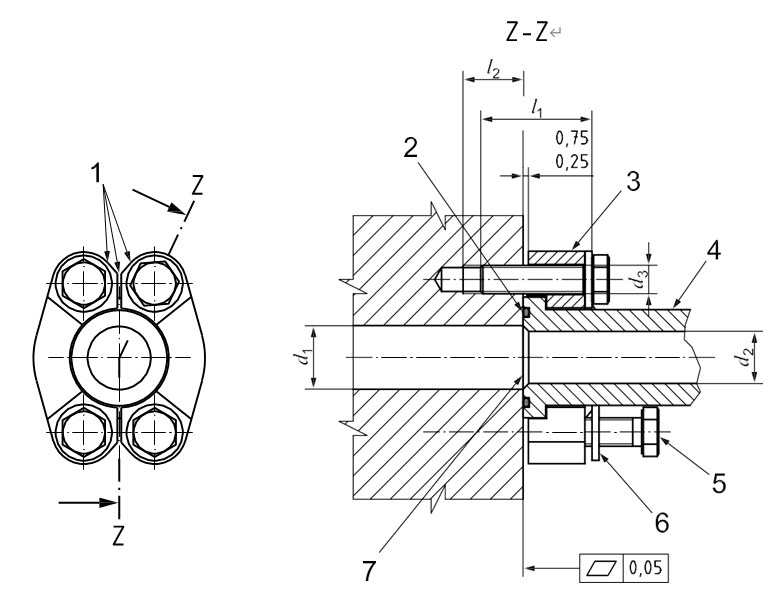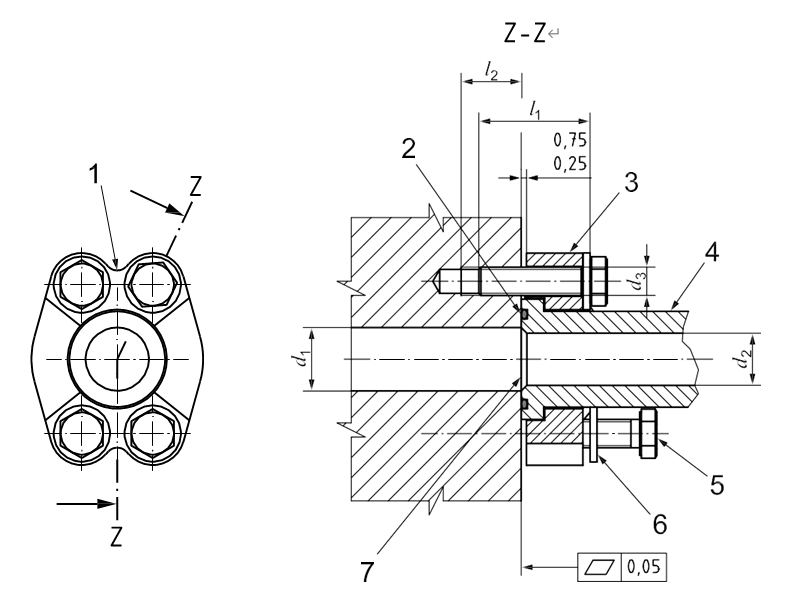How work and connect in hydraulic fluid power system?
In fluid power systems, power is transmitted and controlled through a fluid (liquid or gas) under pressure within an enclosed circuit. In general applications, a fluid may be conveyed under pressure.
Components may be connected through their ports by connectors and conductors (tubes and hoses). Tubes are rigid conductors; hoses are flexible conductors.
What use for ISO 6162-2 flange connectors?
ISO 6162-2 S series code 62 flange connectors are for use in fluid power and general applications within the limits of pressure and temperature specified in standard.
Flange connectors are intended for application in hydraulic systems on industrial and commercial products where it is desired to avoid the use of threaded connectors.
What is the typical connection?
Below are typical examples of ISO 6162-2 flange connector with split flange clamp and one-piece flange clamp, see figure 1 and figure 2.

Key
1 shape optional
2 O-ring
3 split flange clamp
4 flanged head
5 screw
6 hardened washer (recommended)
7 face of port on adapter, pump, etc.
Figure 1 — Assembled flange connection with split flange clamp (FCS or FCSM)
Key
1 shape optional
2 O-ring
3 one-piece flange clamp
4 flanged head
5 screw
6 hardened washer (recommended)
7 face of port on adapter, pump, etc.
Figure 2 — Assembled flange connection with one-piece flange clamp (FC or FCM)

What need pay attention when install flange connectors?
When install the flange connectors, it is important that all screws be lightly torqued before applying the final recommended torque values to avoid breaking the split flange clamps or one-piece flange clamps during installation, see “How to assemble flange connections conforming to ISO 6162-2”.
Where will use flange connectors?
Flange connectors widely used in the world, utilized in hydraulic systems on mobile and stationary equipment sch as excavator, construction machinery, tunnel machinery, crane, etc.
Post time: Feb-07-2022
